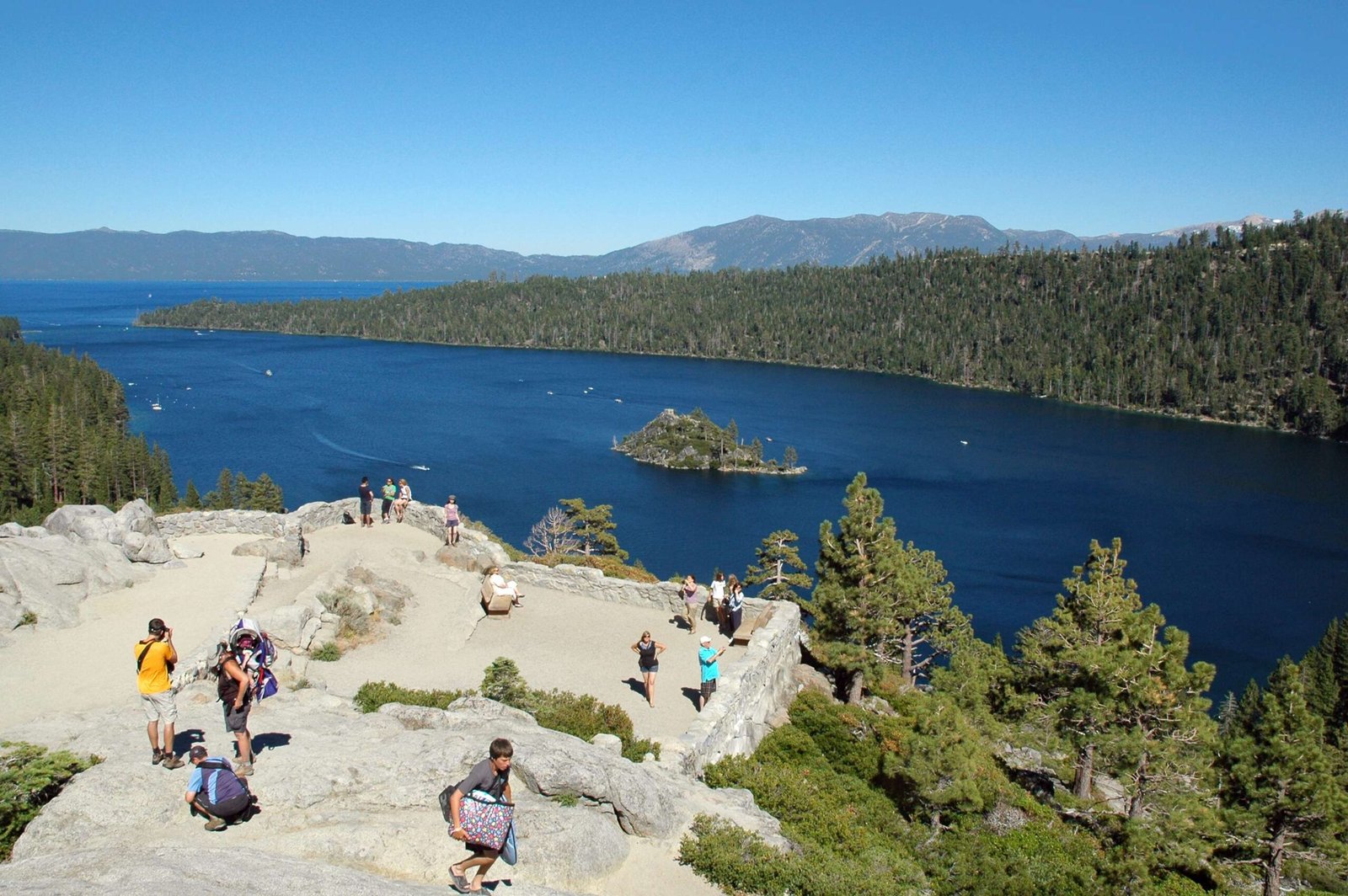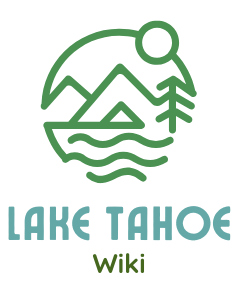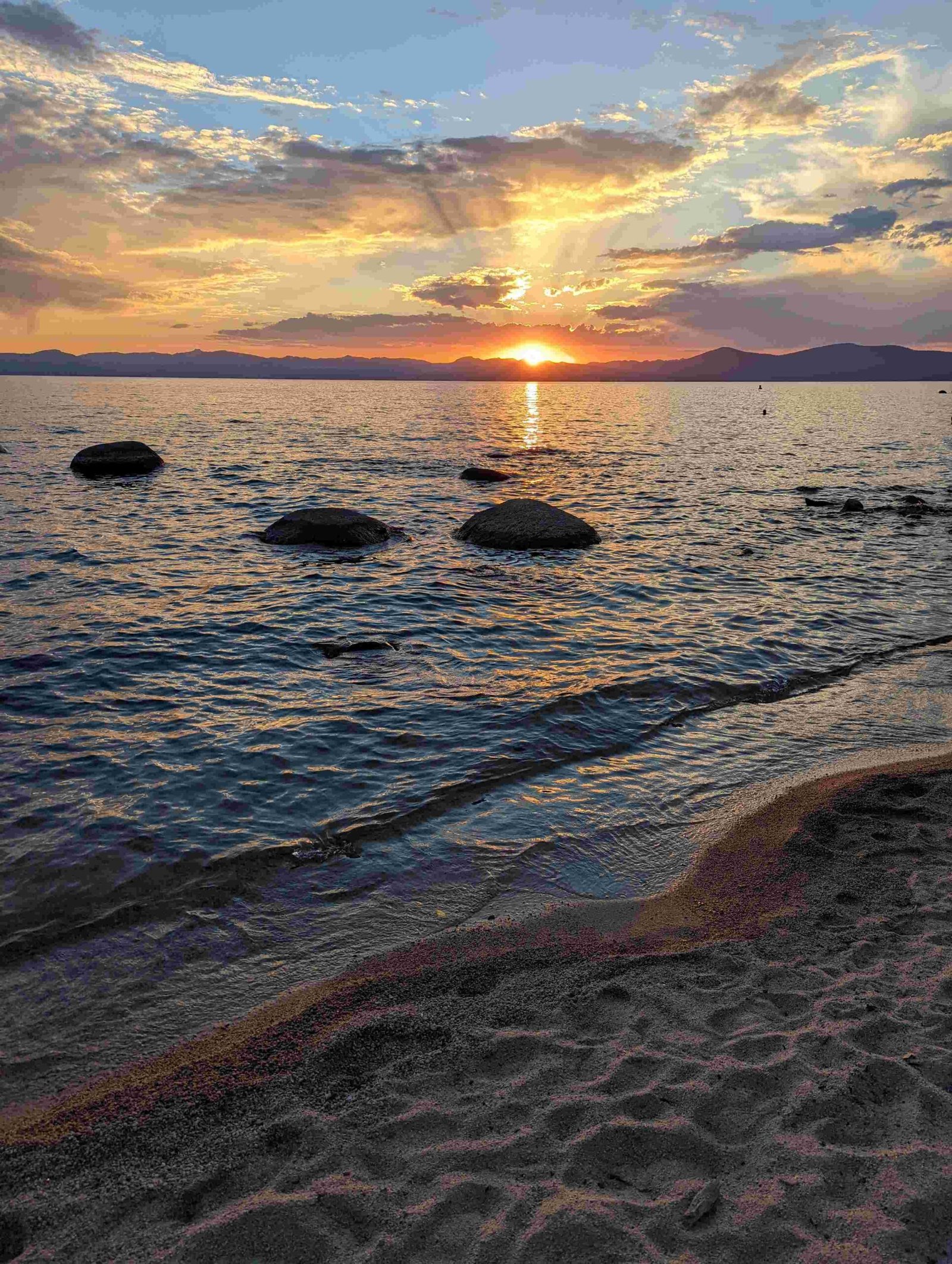Lake Tahoe’s formation is intricately linked to volcanic activity, though it wasn’t directly created by a volcano. The basin’s shape and structure were influenced by a complex interplay of volcanic eruptions, tectonic movements, and glacial activity over millions of years. Volcanic events played a crucial role in shaping the lake’s boundaries and altering its water levels throughout its geological history.
What Evidence Supports Volcanic Activity in Lake Tahoe’s Formation?

The geological evidence supporting volcanic activity in Lake Tahoe’s formation is compelling:
- Basaltic and Trachyandesitic Lavas: Volcanic eruptions in the northwestern and western parts of the Lake Tahoe Basin produced these lava types. They interacted with the early lake (Proto-Tahoe) to form:
- Subaqueous lava deltas
- Pillow lavas
-
Hydrovolcanic breccias
-
Volcanic Ash and Pyroclastic Material: Explosive eruptions created:
- Lapilli tuff cones
- Other pyroclastic deposits
-
Littoral cones where subaerial lava flows met the shoreline
-
Radiometric Dating: The volcanic sequences have been dated, indicating three Pleistocene episodes of volcanic activity:
- 2.3 Ma
- 2.1 Ma
- 0.94 Ma
How Did Volcanic Activity Shape Lake Tahoe Over Time?

The history of volcanic activity in the Lake Tahoe region is marked by several significant events:
Early Volcanism (10 to 3.6 Ma)
- Andesitic volcanism west of Lake Tahoe
- Produced thick sequences of:
- Debris flows
- Lavas
- Tuffs
- Buried older topography
Pleistocene Volcanism (2.3 Ma to 0.94 Ma)
- Small volcanoes erupted in the northwestern and western parts of the basin
- Produced basaltic and trachyandesitic lavas
- Dammed the Truckee River Canyon multiple times, raising lake levels
Canyon Damming Events
- 2.3 Ma: Lake level increased to 2048 m above sea level
- 2.1 Ma: Lake level rose to 2073 m above sea level
- 0.94 Ma: Lake level reached 2085 m above sea level
What Are the Key Volcanic Features Around Lake Tahoe?
Several volcanic features are prominent around Lake Tahoe:
- Lava Flows and Deltas
- Subaerial lava flows overlie subaqueous lava deltas
- Marked by:
- Pillow lavas
- Pillow breccias
- Hyaloclastites
-
Particularly evident where lava flows crossed the shoreline of Proto-Tahoe
-
Tuff Cones
- Lapilli tuff cones formed by explosive interactions
-
Some grew as littoral cones where subaerial lava flows met the lake shoreline
-
Debris Avalanches
- A major debris avalanche occurred around 300 ka
- Resulted in large blocks being carried across the basin
- Blocks up to 1000 m long and 80 m high
- Likely triggered by seismic activity
How Can Visitors Explore Lake Tahoe’s Volcanic Geology?
To explore the volcanic geology of Lake Tahoe, several options are available:
- Guided Tours
- Offered by organizations like the Lake Tahoe Interpretation program
-
Provide insights into the geological history, including volcanic activity
-
Hiking Trails
- Several trails around Lake Tahoe offer opportunities to observe geological features
-
Notable areas:
- Tahoe City area
- Near Cascade Falls
-
Parking and Facilities
- Many trailheads and scenic viewpoints have parking facilities
-
Example: Tahoe City area has several parking lots near trailheads leading to volcanic and glacial features
-
Costs and Schedules
- Vary depending on the tour or activity
- Guided tours: May have specific schedules and fees
- Hiking trails: Generally free and accessible year-round, weather permitting
What Role Did Volcanic Activity Play in Lake Tahoe’s Water Levels?
Volcanic activity significantly influenced Lake Tahoe’s water levels:
- Truckee River Canyon Damming
- Lava flows dammed the canyon multiple times
-
Resulted in substantial lake level increases
-
Lake Level Changes
| Time (Ma) | Lake Level Increase (m above sea level) |
|———–|——————————————|
| 2.3 | 2048 |
| 2.1 | 2073 |
| 0.94 | 2085 | -
Shoreline Shifts
- Volcanic activity caused significant shifts in Lake Tahoe’s shoreline
- Created new landforms and altered existing ones
How Did Volcanic and Glacial Activity Interact in Shaping Lake Tahoe?
The interplay between volcanic and glacial activity was crucial in shaping Lake Tahoe:
- Volcanic Foundations
-
Volcanic activity created the basic structure and topography
-
Glacial Sculpting
- Subsequent glacial periods further shaped the landscape
-
Carved out valleys and created distinctive features
-
Combined Effects
- Volcanic rocks provided resistant material
- Glaciers eroded and transported this material
- Resulted in the unique basin shape we see today
What Are the Most Recent Volcanic Events in Lake Tahoe’s History?
The most recent volcanic events in Lake Tahoe’s history include:
- Latest Dated Eruption
- Occurred approximately 0.94 Ma (940,000 years ago)
-
Part of the Pleistocene volcanic episodes
-
Debris Avalanche
- A significant event around 300 ka (300,000 years ago)
-
Not a volcanic eruption but related to the region’s volcanic history
-
Ongoing Geological Activity
- While no recent eruptions have occurred, the area remains geologically active
- Continued monitoring for potential future volcanic activity
In conclusion, while Lake Tahoe was not formed directly by a volcano, volcanic activity played a crucial role in its formation and evolution. The interplay of volcanic eruptions, tectonic movements, and glacial activity over millions of years has created the stunning landscape we see today. Understanding this complex geological history enhances our appreciation of Lake Tahoe’s natural beauty and scientific significance.
References:
1. https://pubs.geoscienceworld.org/gsa/geosphere/article/14/2/812/527488/Pleistocene-volcanism-and-shifting-shorelines-at
2. http://neotectonics.seismo.unr.edu/0_COURSES/Geo730-2021/Gardner00-1.pdf
3. https://www.conservation.ca.gov/cgs/Documents/Publications/Regional-Geologic-Maps/RGM_004/RGM_004_TahoeBasin_2005_Pamphlet.pdf

